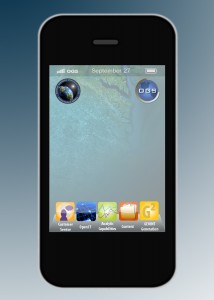Secret apps by next week
The National Geospatial Intelligence-Agency plans to complete the process of installing app stores on all three intelligence networks when it opens the secret version within the next week. Unclassified and top secret versions are already open.
All NGA has to do now is figure out how to fill the stores with apps.
The agency has published about a hundred geospatial apps produced under individual contracts. NGA doesn’t think that approach is financially sustainable or the best way to take advantage of private sector innovation.
But how can NGA fire up the software industry to deliver apps on its own initiative?
That was the topic of an unclassified “Industry Day” held today at the William Allder Auditorium inside NGA’s futuristic Campus East facility in Springfield, Va.
The auditorium was filled almost to capacity by industry officials, some of whom asked hard-hitting questions about the shift NGA is attempting.
Until now, NGA has spelled out and paid for exactly the kind of software it required to solve specific geospatial problems. Under the app model, NGA will give companies broad categories of apps, such as “Counterterrorism” or “Transnational Analysis.” Developers would create apps on their own dime, submit them to NGA for security and legal approval, and earn returns based on how well the apps perform for users who download them from the stores. The apps could be downloaded to smartphones, tablets or desktops, subject to security rules.
“The best athlete will win,” said NGA’s Mark Riccio, application services director in the Online GEOINT Services Directorate, a group established by NGA in February.
NGA is still working out exactly how to measure performance and pay the app developers. Last month the agency released a request for information seeking ideas for compensation models.
The conundrum is that important apps might only be used by handfuls of users, which means numbers of downloads alone can’t be the reward metric. User feedback also would need to be considered, and so NGA is looking at systems of star-ratings and payments for apps that move from bronze to silver to gold categories.
Some fees would come from downloads, but at the industry day NGA officials did not spell out how those fees would be paid. A soldier in a Stryker vehicle, for example, could not whip out a credit card, one attendee noted after the session.
Once that issue is resolved, much would the apps cost to download? In the question and answer session, one of the attendees brought up the example of Angry Birds, the app store game with versions ranging from free to 99 cents.
Jill O’Connor, an NGA contracting lawyer, said prices would take into account how many users are likely to need the app. Some could cost $100, others $400 or even more.
“I don’t think we’re limiting ourselves to the 99 cents,” O’Connor said. “For the ones that only a handful of people will use – tens of thousands of dollars?” she said.
As far as timing, NGA has set bold goals. Director Letitia Long has told staff she wants 75 percent of all apps to come from the industry, not NGA, by July 2013.
NGA also wants developers to produce functional apps within 60 days from concept to operation. The agency is setting up a process to approve them for inclusion in the stores within two weeks of submission, which in the commercial world is about how long Apple requires to approve iPhone apps.



